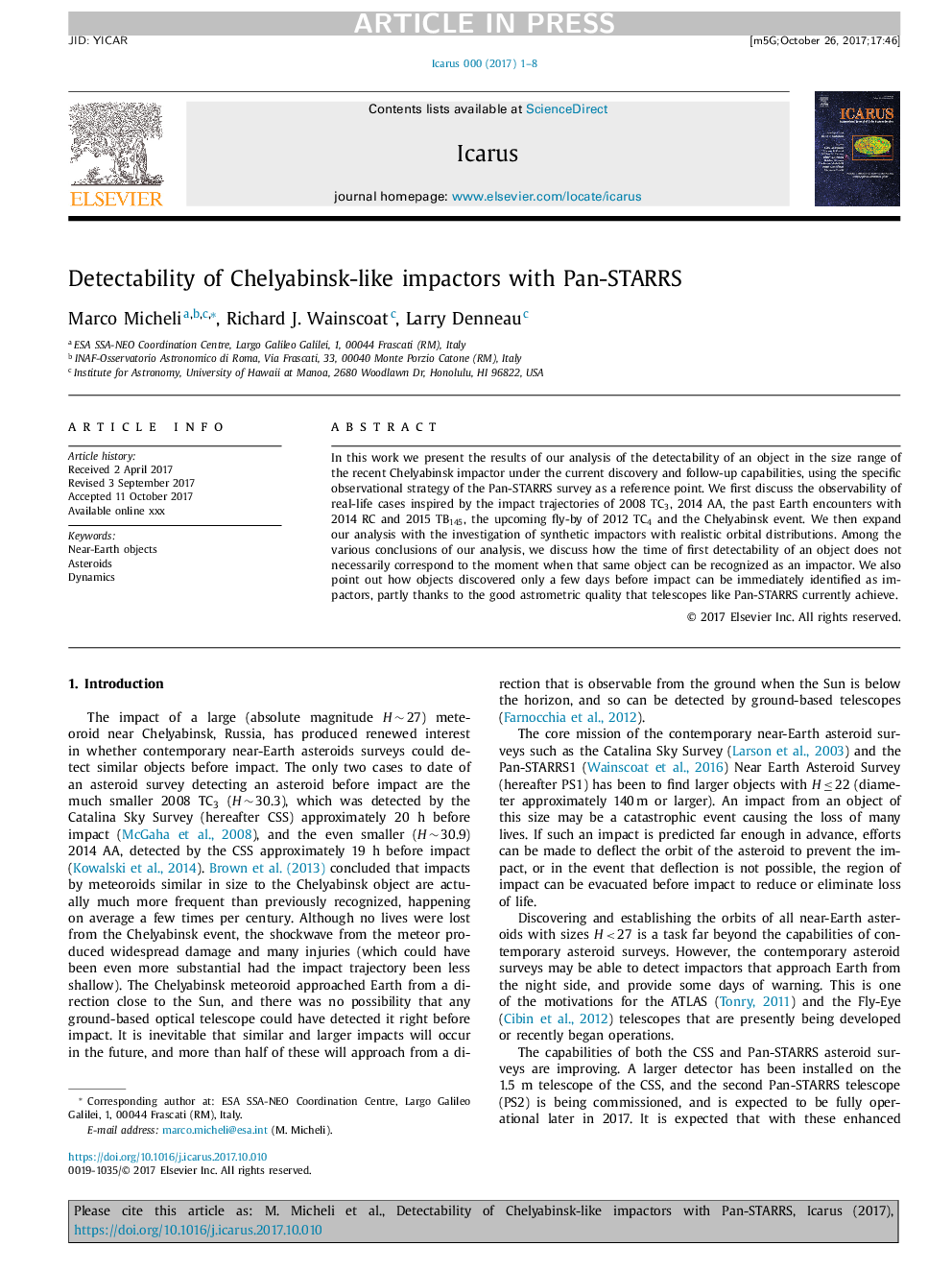| Article ID | Journal | Published Year | Pages | File Type |
|---|---|---|---|---|
| 8134450 | Icarus | 2018 | 8 Pages |
Abstract
In this work we present the results of our analysis of the detectability of an object in the size range of the recent Chelyabinsk impactor under the current discovery and follow-up capabilities, using the specific observational strategy of the Pan-STARRS survey as a reference point. We first discuss the observability of real-life cases inspired by the impact trajectories of 2008Â TC3, 2014Â AA, the past Earth encounters with 2014Â RC and 2015Â TB145, the upcoming fly-by of 2012Â TC4 and the Chelyabinsk event. We then expand our analysis with the investigation of synthetic impactors with realistic orbital distributions. Among the various conclusions of our analysis, we discuss how the time of first detectability of an object does not necessarily correspond to the moment when that same object can be recognized as an impactor. We also point out how objects discovered only a few days before impact can be immediately identified as impactors, partly thanks to the good astrometric quality that telescopes like Pan-STARRS currently achieve.
Keywords
Related Topics
Physical Sciences and Engineering
Earth and Planetary Sciences
Space and Planetary Science
Authors
Marco Micheli, Richard J. Wainscoat, Larry Denneau,
